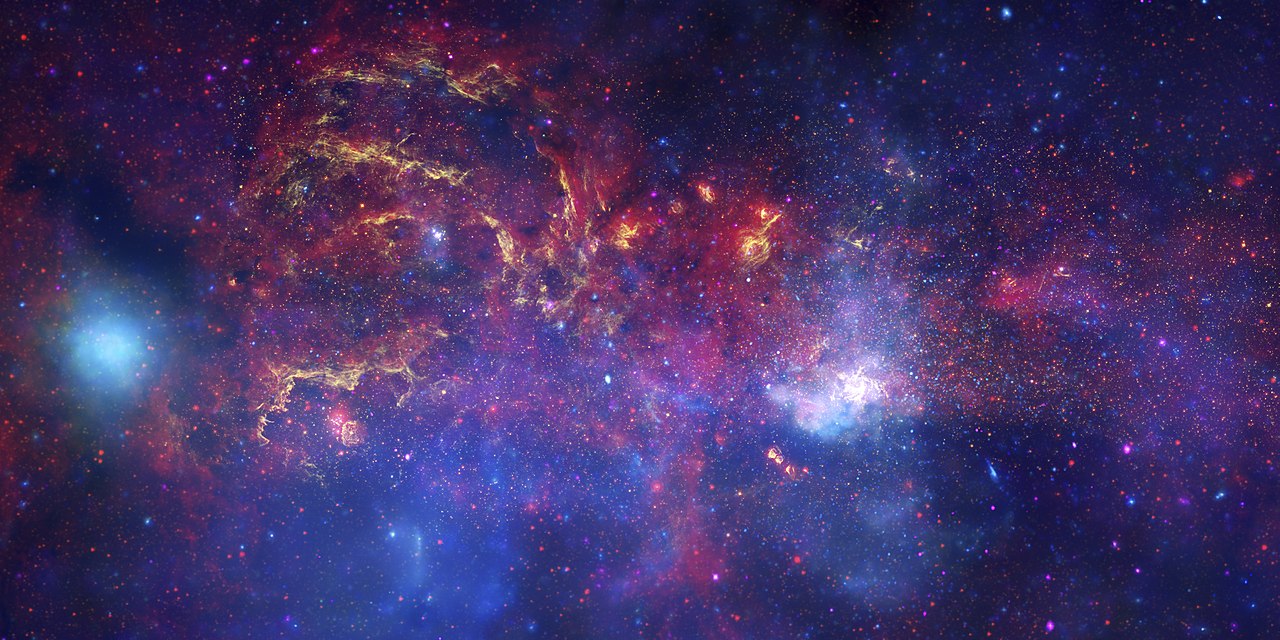
“I think I can safely say that nobody really understands quantum mechanics.” Richard Feynman
Previously in this series: On Consciousness
We are taking a quick look at the quixotic nature of the quantum world as part of our long-way-around approach to examining the nature of human consciousness. We’ll begin with how little we actually know about our world at the quantum level:
The universe we know – stars, planets, galaxies – makes up only about 4 percent of the mass of the entire universe, and we have no idea what the other 96 percent is.
If you add up the mass of all the observable matter in the universe (stars, black holes, etc.) those objects account for less than 5 percent of the mass of the entire universe. So what makes up the rest? It’s what we call “dark energy” and “dark matter” – “dark” because whatever it is it doesn’t interact with light.
We know this dark stuff exists – that is, we know it indirectly – because we know the universe is expanding far faster than would be the case if the objects we know about were all there is. But that’s roughly all we know.
In other words, all the activity and discoveries that are trumpeted by astrophysicists – quasars, black holes, colliding galaxies – are events that are taking place in a tiny corner of the universe, while all the action is happening someplace else and we’re missing it entirely.
The implications of dark energy/matter are enormous. Most important, it is causing the expansion of the universe to accelerate, suggesting the possibility that the universe is eternal. This is happening because there is more than three times as much dark energy – an accelerator – than there is dark matter – a contractor.
But it’s possible that unknown processes going on within dark energy/matter could transform energy into matter, causing the expansion of the universe to turn on a dime and begin to shrink, possibly very rapidly.
Something like this happened early in the post-Big Bang era, for example. The universe was dominated by dark energy, but then intense radiation from quasars (which had formed from gravitational collapse) re-ionized some of the dark energy, creating visible plasma.
The transformation of dark energy into dark matter would result in the entire universe contracting down to a tiny ball which might then explode, creating a whole new universe: not a Big Bang but, as some physicists like to put it (because it can happen again and again), a Big Bounce.
Or maybe not. The point is that our ignorance is staggering.
Quantum entanglement
This phenomenon is so weird and so famous that even middle school kids know about it. What Einstein called “spooky” particles somehow manage, once entangled, to interact with each other even across billions of miles.
If proton A is entangled with proton B, then whatever proton A is doing, proton B will be found to be doing. If A is red, B will be red. If A is spinning on its horizontal axis, so will B. All this was predicted by Einstein and it has been shown to be true experimentally.
For example, assume particles A and B become entangled in London. Particle B is then sent spinning off to Chicago to the Fermilab. Even though the two particles are far apart, they will remain entangled, mimicking each other exactly. This isn’t because they’ve been preprogrammed (the particles contain no such information), and it isn’t because some signal is being sent between them (even light would travel 10,000 times too slowly). It’s because…, well, who knows?
And yet, the phenomenon of quantum entanglement is real enough that it is already being used in such applications as cryptography and quantum computing. In effect, entanglement is a kind of “wormhole” that allows information to pass from object to object without considering distance – a phenomenon physicists call “nonlocality.”
The theory of general relativity and quantum theory are both correct but they also directly contradict each other
Relativity theory, which operates at a very large scale, has been shown to predict accurately a wide variety of otherwise unknown phenomena, and the same is true of quantum theory. And yet, it seems clear they can’t both be right because they directly contradict each other.
Relativity operates in a smooth, wave-like way, while quantum rules require chunky “quanta.” If you attempt to apply relativity theory on a quantum scale, the outcome is nonsensical – you get infinite results.
Similarly, quantum theory, if applied to the large scale on which relativity operates, implies quantum fields so great that a black hole is implied the size of the entire universe.
There have been many attempts to reconcile relativity and quantum theories, but none is entirely satisfactory. The leading candidate, so-called “string theory,” argues that all the various subatomic particles (electrons, photons, neutrinos, etc.) can be understood as one-dimensional “strings,” which are tiny hypothetical objects that are one-dimensional, possessing length but neither height nor width.
You now know everything I know about string theory. Fortunately, no evidence that it is correct has been found, so we won’t worry about string theory and its ten-dimensional universe.
Another candidate for the “theory of everything” is so-called “loop theory,” or “loop quantum gravity” (LQG). You now know everything I know about LQG, but fortunately there is also no proof that it is correct.
Quantum objects behave differently depending on whether we are looking at them or not
This seems to be another nonsensical aspect of quantum theory. What possible difference can it make whether a human actor – almost always a physicist conducting some annoying experiment in a staggeringly expensive laboratory – is looking at a particle or not? Does the particle care? Has it been lonely?
Einstein once remarked, “Do you really believe the moon exists only when you look at it?” But quantum particles are so small that the mere fact of observing them – of shining light on them – changes them.
Therefore, it seems clearly to be the case that, like Schrödinger’s cat, when no one is looking subatomic particles exist in what physicists call a state of “superposition.” That is, they can be in any of a number of different possible states that can only be calculated probabilistically. Schrödinger’s hypothetical cat is in a box and is either alive or dead, or possibly both, and only exists in one state or another when we open the box and look inside. Exactly what the cat thinks about all this is something Schrödinger doesn’t say.
Next week we’ll turn to several more truly outlandish quantum ideas.
Next up: On Consciousness, Part III














